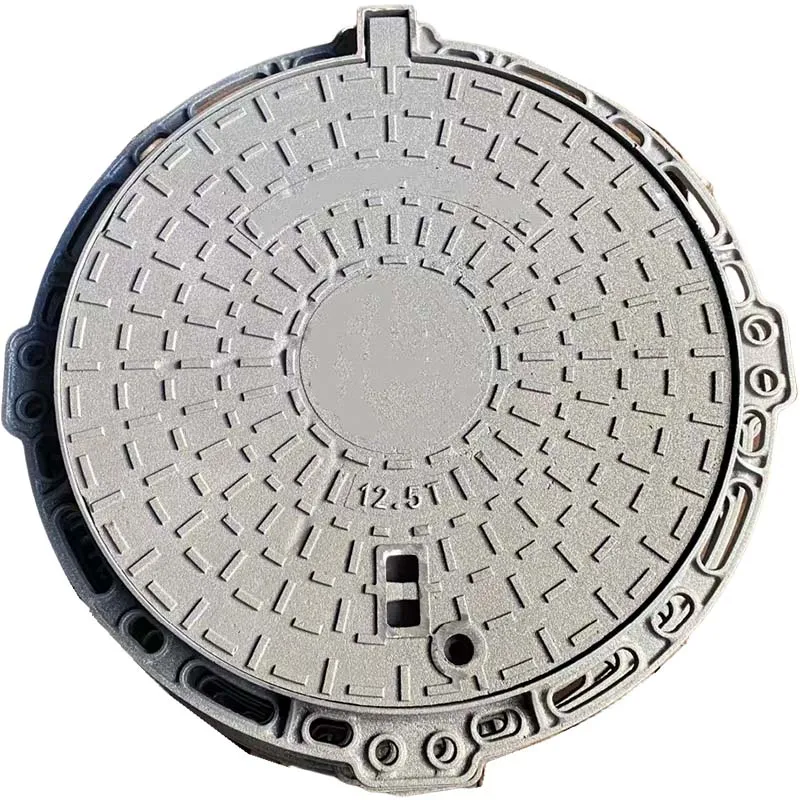700 x 700 manhole cover
The Importance of 700 x 700 mm Manhole Covers in Urban Infrastructure
Manhole covers are often overlooked components of urban infrastructure. They serve as the gateway to the underground world of utilities and infrastructure, encompassing everything from electrical systems to sewer lines. Among the various sizes and types available, the 700 x 700 mm manhole cover stands out for its versatility and significance in modern city planning and maintenance. This article examines the reasons behind their widespread use, their construction materials, and the importance of maintaining these essential covers.
Versatility and Applications
The 700 x 700 mm manhole cover is widely used in urban environments due to its balanced shape and size, making it suitable for various applications. These covers are typically employed in roadways, pedestrian pathways, and even in parks and recreational areas. Their standardized dimensions allow for easy replacement and maintenance, creating uniformity in urban design. They are large enough to access utility systems while being manageable for workers during installation or repairs.
These covers often encase access points for sewer systems, stormwater management systems, and underground utility connections, which are all critical to the functionality of a city. In densely populated areas, where utility networks are complex and intertwined, the 700 x 700 mm cover provides a practical solution to accessing these vital services without excessive excavation.
Materials and Durability
Construction materials significantly impact the longevity and functionality of manhole covers. The 700 x 700 mm covers are commonly made from cast iron, ductile iron, or composites that are durable enough to withstand heavy loads and harsh environmental conditions. Cast iron covers provide excellent strength, is resistant to corrosion, and can withstand high compression forces, making them ideal for high-traffic areas.
700 x 700 manhole cover

On the other hand, ductile iron offers an additional level of flexibility and ductility while maintaining high strength. Composite materials are gaining popularity for their lightweight features and resistance to rust, making them easier to handle and transport when replacement is necessary. Regardless of the chosen material, the primary goal remains to ensure that the covers can endure daily wear and tear, natural elements, and the strain of vehicular traffic.
Safety and Maintenance
The importance of safety cannot be overstated when discussing manhole covers. A loose or damaged cover poses significant risks to pedestrians and vehicles alike. The 700 x 700 mm covers are designed with safety features, including anti-slip surfaces and secure locking mechanisms, to minimize such risks. Regular inspection and maintenance of these manhole covers are crucial to prevent accidents and ensure public safety. City planners must establish proactive maintenance schedules to prolong the life of these covers and promote a safe environment for everyone.
Furthermore, various regulatory bodies set standards for manhole covers' load-bearing capacity, ensuring they can support expected traffic loads. These regulations help maintain the structural integrity of the covers and the systems they protect, ensuring reliable service for years to come.
Conclusion
The 700 x 700 mm manhole cover may seem like a simple component of urban infrastructure, but its importance cannot be overlooked. It serves as a vital access point to essential utility systems, offering convenience and safety for both workers and the public. As cities continue to grow and evolve, maintaining the structural integrity and functionality of manhole covers will be crucial. By prioritizing high-quality materials, safety features, and regular maintenance, urban planners can ensure that these covers remain effective and contribute to the overall efficiency of city infrastructure. Proper management of manhole covers is not only about preserving the functionality of the city's utilities but also about safeguarding public safety and enhancing the quality of urban life. With continued attention to these seemingly mundane components, cities can thrive and adapt to the ever-growing demands of their inhabitants.
-
The Smarter Choice for Pedestrian AreasNewsJun.30,2025
-
The Gold Standard in Round Drain CoversNewsJun.30,2025
-
The Gold Standard in Manhole Cover SystemsNewsJun.30,2025
-
Superior Drainage Solutions with Premium Gully GratesNewsJun.30,2025
-
Superior Drainage Solutions for Global InfrastructureNewsJun.30,2025
-
Square Manhole Solutions for Modern InfrastructureNewsJun.30,2025
-
Premium Manhole Covers for Modern InfrastructureNewsJun.30,2025
